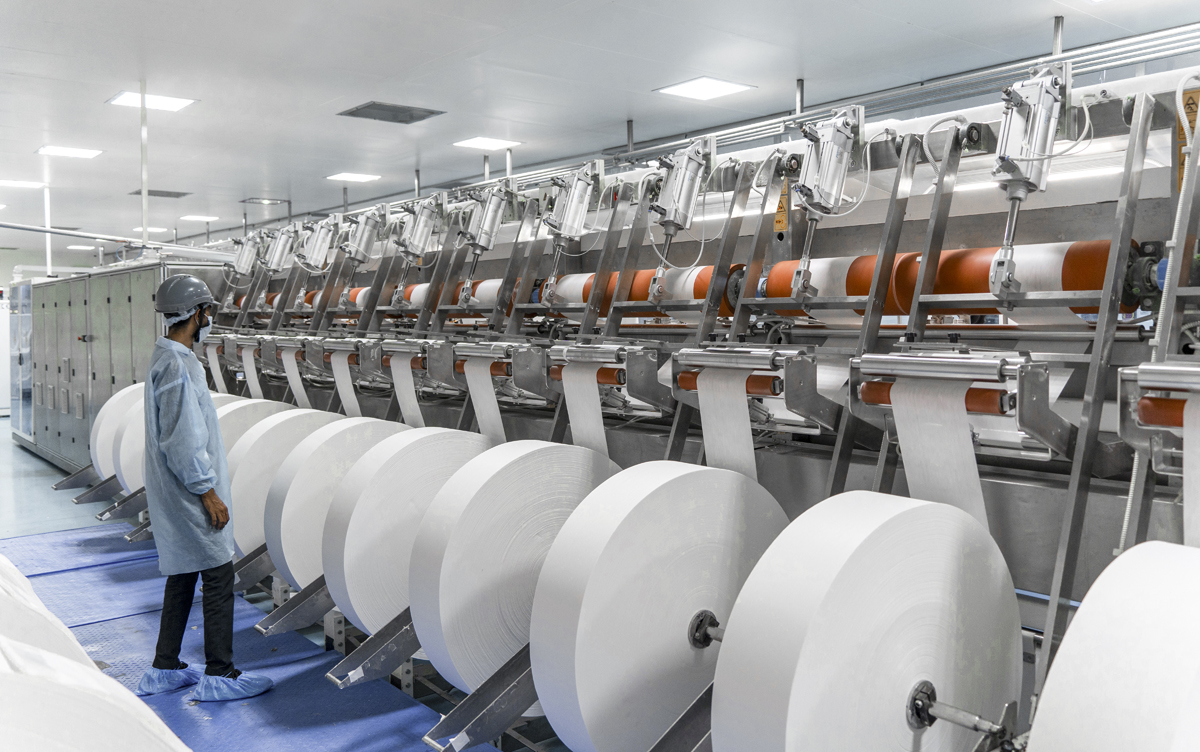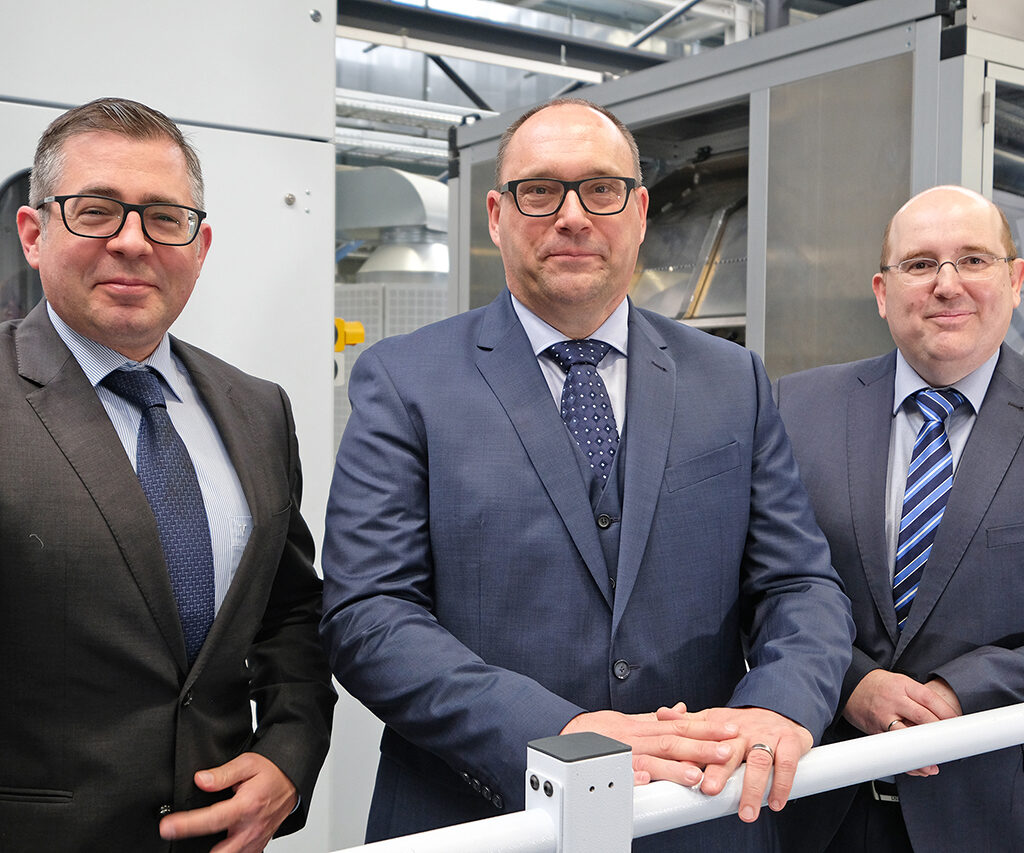
When it comes to nonwovens, Truetzschler Nonwovens has shown the perfect way to producing quality products with its AquaJet, a spunlacing unit doing service in well over 150 installations worldwide
The name of Truetzschler is well-known throughout India. As a first-tier cotton growing and processing country, India soon became a focus of Truetzschler’s business activities. Since 1888, the family-owned Truetzschler Group is a technology market leader in spinning preparation in the cotton and manmade fibre sector. Changing market trends, new technologies, economic crises – Truetzschler has accepted these challenges and expanded its business field continuously. About 15 years ago, the company took the first steps into nonwovens. It was a decision for organic growth with blow room machinery and carding expertise as nuclei.

Over the years, Truetzschler took over assets of famous German companies Fleissner, Erko and Bastian to form Truetzschler Nonwovens. Nowadays, Truetzschler Nonwovens supplies complete production lines and machinery for hydroentangled (spunlaced), through air and chemically bonded nonwovens. The range of products includes solutions encompassing the entire fibre-based nonwovens process chain from fibre preparation, web formation, web bonding, and finishing to drying and winding.
Nonwovens
The story of nonwovens is a story of success. Felting had been invented in ancient times and still is an important process in today’s nonwovens production. More than 20 per cent of nonwovens are made by modern needling production lines. There is one disadvantage to the needling process: it’s slow. Production speeds of typical needling lines seldom are above 100 metres per minute. To speed up, technologists invented hydroentangling, also called spunlacing. Fibres – natural, manmade, mineral and even spun-bonded filaments – are entangled by high-pressure water jets.
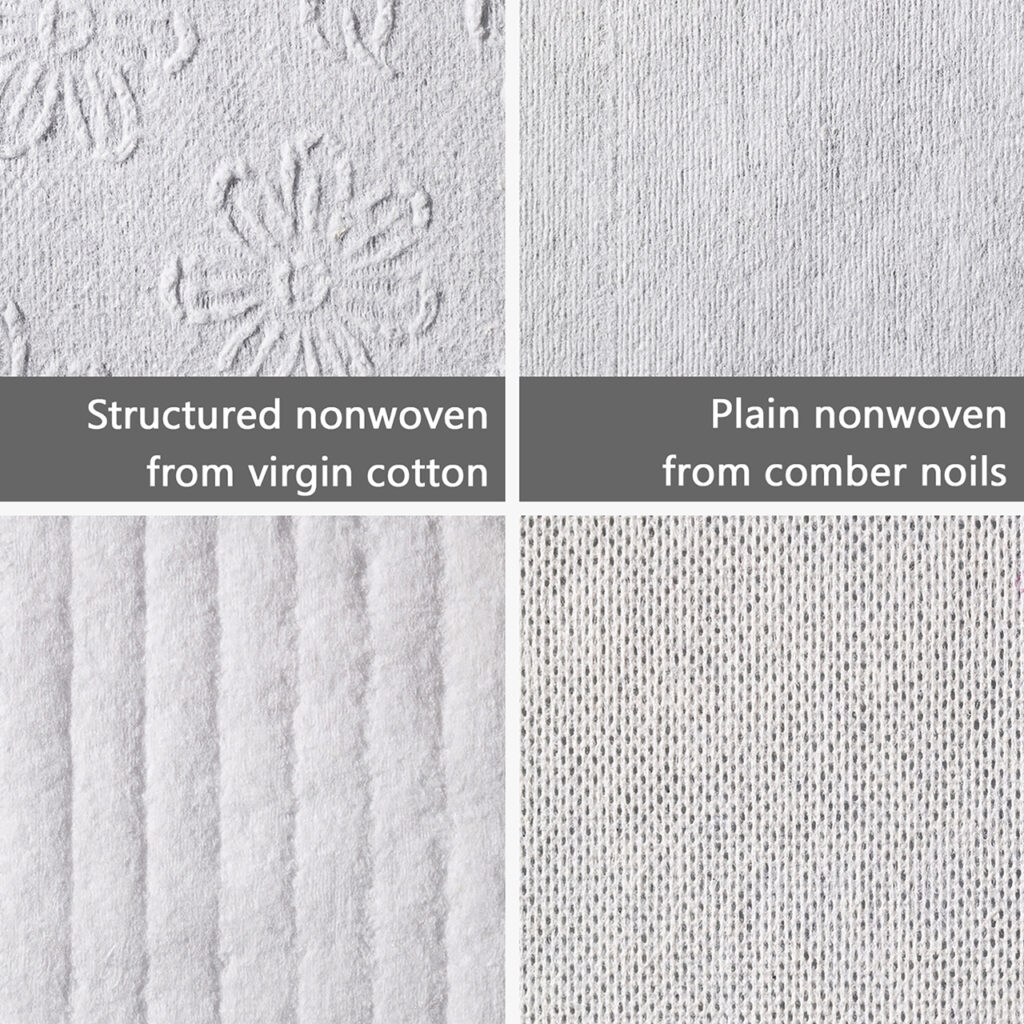
Modern spunlacing lines reach production speeds of more than 300 metres per minute at the winder. Spunlacing laid the foundation for the second-largest nonwoven end product category: disposable wipes. Wet and dry wipes for baby and personal care, households, hospitals and nursing homes became popular due to convenience, performance and low prices. During the pandemic, the wipes segment grew significantly because demand for disinfectant wipes skyrocketed.
Competence Factors
Truetzschler Nonwovens most famous machine is the AquaJet, a spunlacing unit doing service in well over 150 installations worldwide. The AquaJet is a versatile solution – lightweight carded webs for wipes are as easily processed as wet-laid webs for moist toilet tissue or multi-layer cotton webs for cosmetic pads. On the other end of the spectrum are heavyweight webs for hot gas filtration, automotive trim or coating substrates. In the past few years Truetzschler Nonwovens’ development efforts concentrated on the carding and web forming steps, well-known bottlenecks in high-speed fibre-based nonwovens production.
Both processes determine the final fabric’s quality. A couple of years ago, producers could either opt for web quality – and had to pay the price of lower production speeds – or they went for high-throughputs and had to sacrifice on visual appearance. “The ‘either or’ decision – web quality or performance – vanished with the development of our NCT high-speed card. Two large cylinders offer a large carding area and the double intermediate transfer ensures excellent fibre blending. A configuration of two NCT cards set in line delivers production speeds above 300 metres per minute at the winder,” explains Bodo Heetderks, Director Technology, Truetzschler Nonwovens.
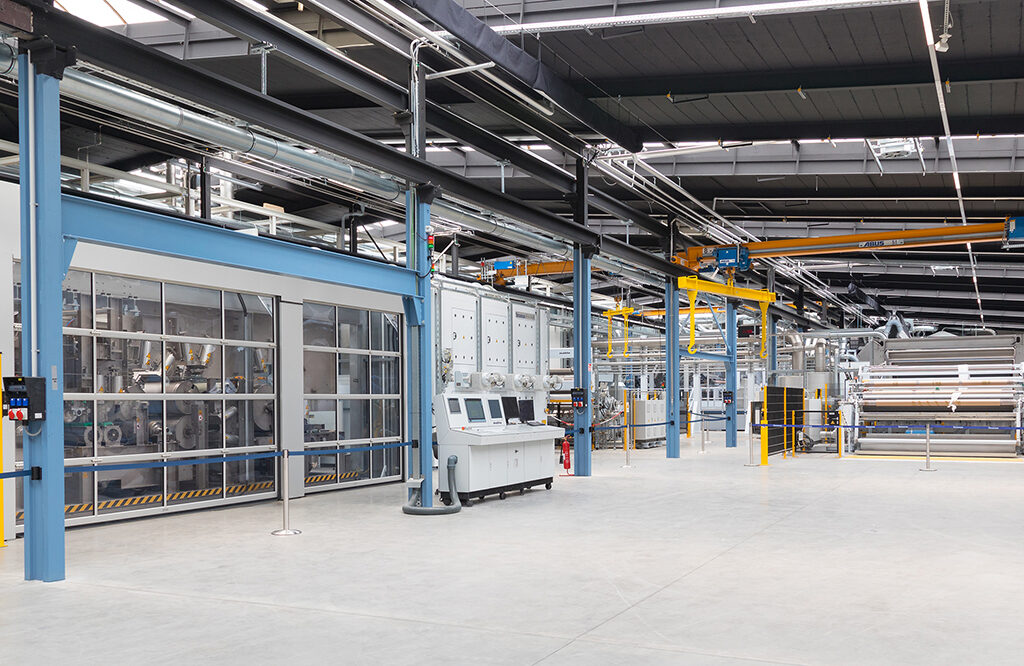
Sustainable Wipes
The never-ending success of nonwovens has a dark side – waste. Efficient technologies, hydroentangling, for instance, and an abundance of manmade fibres brought production costs down. Convenient, single-use wet and dry wipes became affordable for more and more people. So the nonwovens waste mountain grows every year. Unfortunately, many wipes contain petroleum-based polyester or polypropylene fibres. Now western countries are considering or have already placed a ban on single-use plastic products and wipes containing plastic fibres. These regulations will put an end to the conventional wipe made of a polyester or viscose blend.
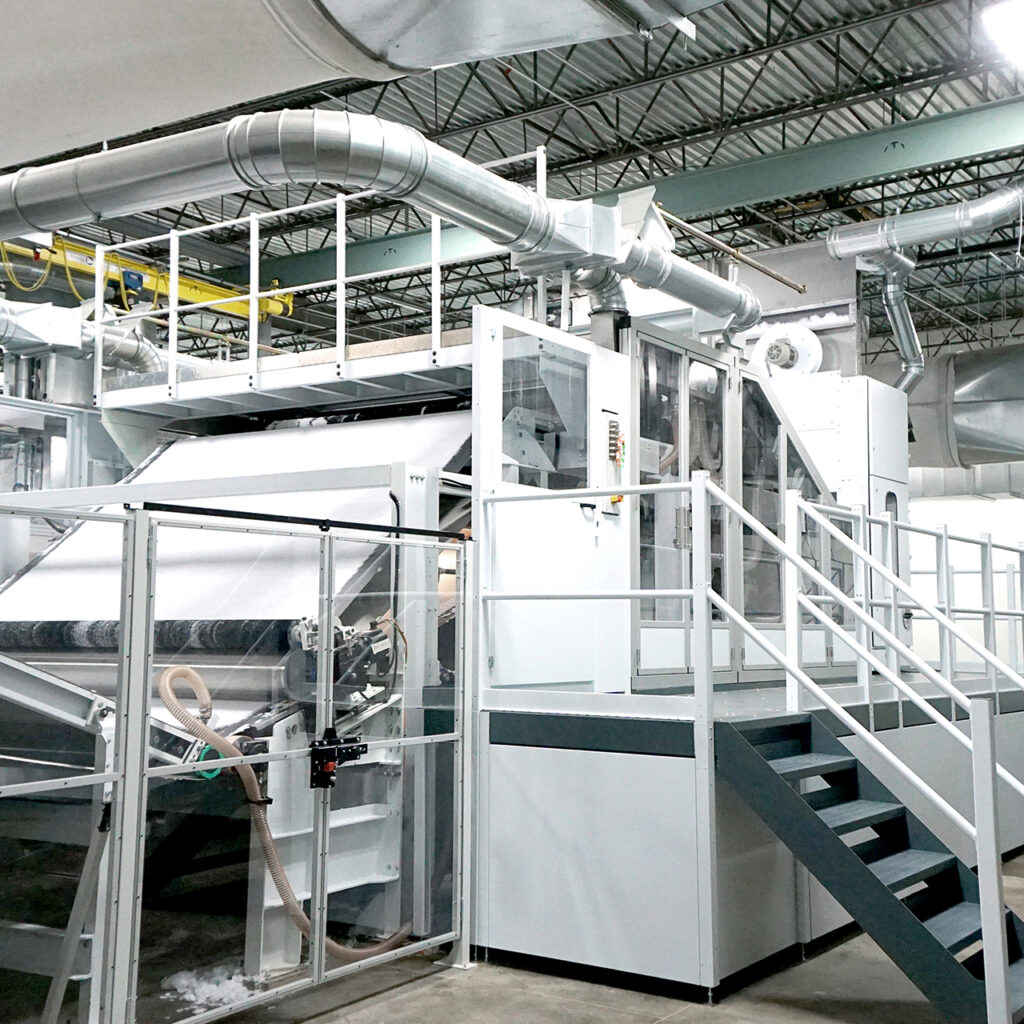
“We started looking for eco-friendly fibre alternatives a decade ago,” says Oliver Doering, Director Sales and Marketing, Truetzschler. “Cotton and other natural fibres were too expensive for mass products, as were re-generated cellulose fibres such as viscose and lyocell. At that time, we came in closer contact with Voith, a well-known German supplier of paper machinery. We both discovered the huge potential of paper-grade pulp for nonwovens. NBSK wood pulp is a low-cost fibre, biodegradable and available all over the world. We jointly developed the WLS i.e. wet-laying and spunlacing technology to process wood pulp and lyocell or viscose fibres into flushable wipes,” he adds.
The second step came some years ago and some WLS line start-ups later. Combining a wet-laid pulp layer with a carded web results in even superior carded pulp (CP) nonwovens with higher wet strength, more volume, greater softness and visual appeal. Klaus Wolf, CEO of Truetzschler Nonwovens, is convinced that CP is the ideal wipes technology. “Raw material costs are low, proven processes allow for high throughputs and end products just feel and look great. CP wipes from cellulose-based fibres decay into biomass, water and gases when thrown away. CP nonwovens mean no more waste – a really future-fit product,” he points out. These points also convinced Tufropes, the famous Indian specialist for innovative rope and netting solutions. Voith and Truetzschler Nonwovens will deliver a state-of-the art CP line in 2022.
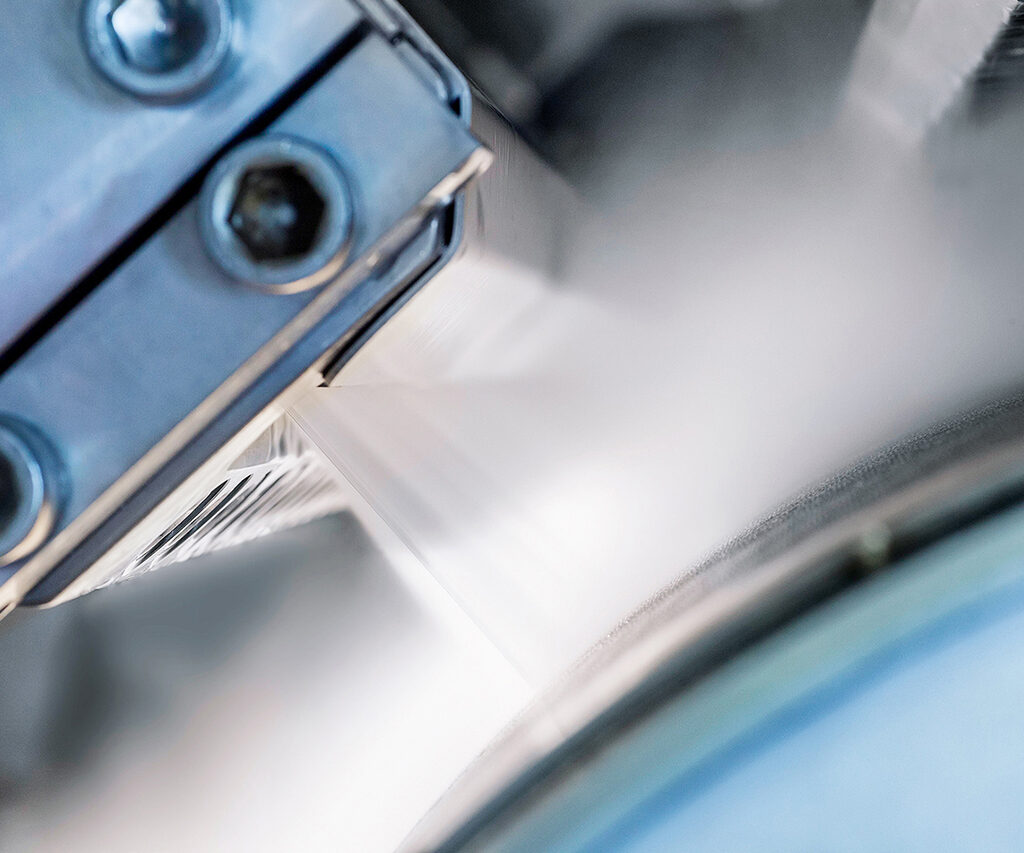
NCTC at Egelsbach
Truetzschler Nonwovens operates the new Nonwovens Customer and Technology Center (NCTC) at Egelsbach, Germany. The two nonwoven lines installed allow for trials in carding and spunlacing, crosslapping and spunlacing, wet-laying and spunlacing and through-air bonding processes. “For us, the more than 5,000 square metres mean raw material trials, machine tests and process optimisations. For you, the NCTC means the certainty that the chosen solution delivers in practice what it promises on paper. Customers can book trial time and can take advantage of our profound know-how to test own raw materials or to check the feasibility of a new product idea. The facility is also open for extensive hands-on training,” the management states.
Hub in India
Truetzschler’s Indian subsidiary was established in 1977 in Ahmedabad. In the initial years from 1981 to 1992 activities concentrated on supplying blow room machines. In 1992, cards were added to the production program and in 2002 draw frames. It was in 2009 that the transition began to supply TIPL-made machinery to the Indian market under the ‘Trützschler’ brand name. These cutting-edge machines ensure that both products and services are of a world-class level. The company is a major keystone of the Truetzschler Group’s ‘global production strategy’. TIPL also supports the group’s nonwoven activities in India and elsewhere. Project planning, sales and nationwide service are independently taken care of. More than 65 field engineers and technicians perform start-up and maintenance activities in India and worldwide.





